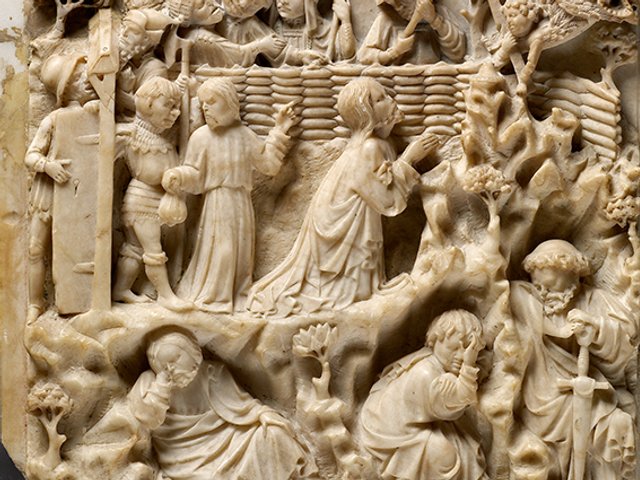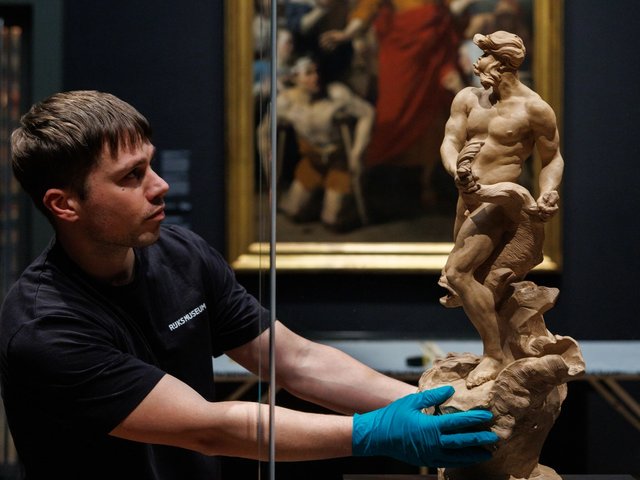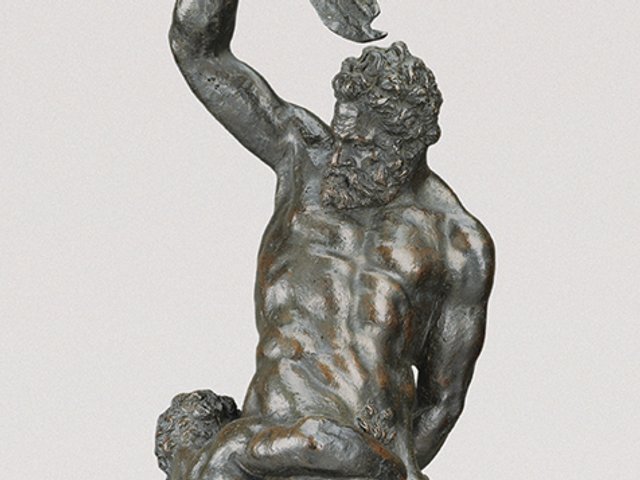The Neptune Fountain in Bologna is the second monograph to be published by Vistas, an exciting initiative conceived and led by the New York-based collectors Hester Diamond and Jon Landau. The project aims to give an innovative impetus to sculpture studies, by combining traditional print-based media with a range of high quality digital images, made using the latest technology, and freely available online at www.vistasvisuals.org.
The commanding and elegant presence of the Neptune Fountain is felt throughout the complex of squares forming the historic centre of Bologna. The fountain has long been recognised as one of the great examples of Renaissance civic sculpture and as a masterpiece of the Italo-Flemish Renaissance sculptor Giovanni Bologna (Giambologna). But, perhaps in part because it is not in Florence or Rome, it has up to now been surprisingly little studied.
Such neglect is handsomely addressed in this excellent monograph, on which the Renaissance architectural historian Richard Tuttle was working at the time of his early death in 2009. It has now been sensitively revised and edited from the near-complete manuscript by two of his former colleagues.
The book provides a definitive analysis of the fountain, its structure and its component parts. These include not simply the crowning statue of Neptune, but more than 30 other bronze elements designed by Giambologna, as well as a complex architectural structure within which run no fewer than 38 water jets.
Tuttle transforms our knowledge and understanding of the monument and its genesis, placing it in the context of the energetic programme of public works initiated between 1560 and 1565 by Pope Pius IV’s governor in Bologna, Pier Donato Cesi. These also included the seat of Bologna’s university, the Palazzo dell’Archiginnasio, the central courtyard of which would have been embellished with the first version of Giambologna’s even more celebrated statue of Mercury, had not Cesi’s term of office come to an end.
The author crucially demonstrates that it is incorrect and unjust to label the Neptune Fountain simply as the work of Giambologna. In fact, it was a close collaboration from the beginning between the sculptor and the Sicilian-born architect Tommaso Laureti, whose part in its creation was actually in many respects more important. Laureti was responsible for the design concept; he engaged Giambologna and his founder Girolamo di Zanobi Portigiani and supervised the entire construction process. Laureti also designed and engineered the complex hydraulic systems necessary to feed the fountain, which astonishingly largely survive and are discussed and beautifully illustrated in one of the most revelatory chapters in the book.
Laureti’s pride in his achievements is evident from his detailed description of his work on Bologna’s water systems in an “Instruttione” which he prepared when he departed Bologna for Rome in 1582, as a reference guide for future generations of city engineers. This is reprinted in a documentary appendix, along with many other surviving documents for the Neptune Fountain project, while the online images accompanying the present volume include a time-lapse video, documenting the life of the Neptune Fountain over one day. Richard Tuttle devoted a lifetime to study of this superb monument, at the heart of his beloved Bologna. His wonderfully readable monograph is a fine memorial to this distinguished scholar, and an object lesson in why the very greatest works of art demand such profound and long-term engagement.
Jeremy Warren is an Emeritus Research Fellow at the Wallace Collection
The Neptune Fountain in Bologna: Bronze, Marble and Water in the Making of a Papal City
Richard J. Tuttle
Vistas, in association with Harvey Miller Publishers, 248pp, €75 (hb)




